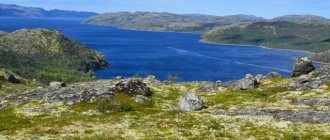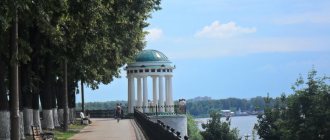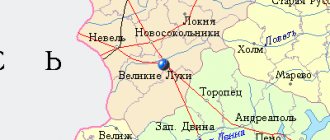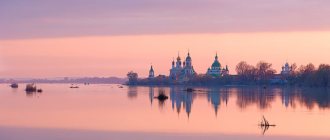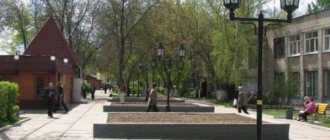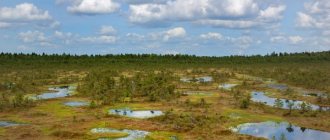For other places with the same name, see Proletarsk.
City in Rostov region, Russia
| Proletarsk Proletarsk | |
| City [1] | |
| Location of Proletarsk | |
| Proletarsk Location of Proletarsk Show map of Russia Proletarsk Proletarsk (Rostov region) Show map of Rostov region | |
| Coordinates: 46°42'N 41°44'E / 46.700°N Latitude 41.733°E / 46,700; 41.733 Coordinates: 46°42'N 41°44'E. / 46.700 ° N. Latitude 41.733°E / 46,700; 41,733 | |
| A country | Russia |
| Federal subject | Rostov region [1] |
| Administrative region | Proletarsky district [1] |
| urban village | Proletarskoe [1] |
| Height | 15 m (49 ft) |
| population size (2010 Census) [2] | |
| • General | 20 267 |
| • Evaluate (2018) [3] | 19 032 (-6,1 % ) |
| Administrative status | |
| • Capital from | Proletarsky district [1], urban settlement Proletarskoye [1] |
| Municipal status | |
| • Municipal district | Proletarsky municipal district [4] |
| • Urban village | Proletarian urban settlement [4] |
| • Capital from | Proletarsky municipal district [4], urban settlement Proletarskoye [4] |
| Timezone | UTC+3 (MSK[5]) |
| Postal code [6] | 347540–347542, 347544 |
| OKTMO ID | 60645101001 |
Proletarsk
(Russian: Proletarsk) is a city and the administrative center of Proletarsky District in Rostov Oblast, Russia, located on the Manych River, on the Rostov-on-Don–Baku railway. Population: 20,267 (2010 census); [2] 19,572 (2002 census); [7] 19,422 people (1989 census). [8]
Symbols of the city of Proletarsk
File:Cool4.jpg 150px
The city of Proletarsk has its own symbols: a flag and a coat of arms.
Coat of arms of the city of Proletarsk
The eagle is a symbol of steppe space and freedom. Black color symbolizes wisdom, modesty, honesty and the eternity of existence. The heraldic figure crutch, consisting of two honorary heraldic figures - the head and the pillar, enhances the symbolism of the coat of arms: the pillar, occupying the middle part of the coat of arms (center), shows the Proletarskoe reservoir, on which the district is located; the chapter occupying the upper part of the coat of arms focuses on the rich historical past of the region and its vast steppes. Red color is a symbol of courage, courage, beauty and work. Yellow color (gold) symbolizes the highest value, greatness, strength, generosity. In addition, gold is the color of bread, which means the color of agriculture and hard work. White color (silver) symbolizes purity, innocence, purity of thoughts. Purple symbolizes dignity, joy, abundance. Blue color (azure) - symbolizes glory, honor, loyalty, sincerity.
.
Map
| Proletarsk: maps |
Proletarsk: photo from space (Google Maps) Proletarsk: photo from space (Microsoft Virtual Earth)
| Proletarsk Nearest cities. Distances in km. on the map (in brackets along roads) + direction. Using the hyperlink in the distance , you can get the route (information courtesy of the AutoTransInfo website) | |||
| 1 | Salsk | 27 (34) | SW |
| 2 | Orlovsky | 31 (32) | NE |
| 3 | Giant | 35 () | SW |
| 4 | Virgin land | 55 (79) | Z |
| 5 | Yashalta (Republic of Kalmykia) | 58 (103) | SE |
| 6 | Razvilnoe | 60 (69) | SW |
| 7 | Bolshaya Martynovka | 64 (101) | WITH |
| 8 | Gorodovikovsk | 70 (98) | YU |
| 9 | Peschanokopskoe | 73 (86) | SW |
| 10 | Zimovniki | 75 (78) | NE |
| 11 | Egorlykskaya | 81 (102) | Z |
| 12 | Funny | 86 () | NW |
| 13 | White Clay (Krasnodar region) | 94 (121) | SW |
| 14 | Volgodonsk | 96 (128) | WITH |
| 15 | Mechetinskaya | 96 (131) | Z |
| 16 | Romanovskaya | 96 (142) | WITH |
| 17 | Krasnogvardeyskoe (Stavropol Territory) | 96 (143) | YU |
| 18 | Krasnoyarsk | 108 () | WITH |
| 19 | Konstantinovsk | 108 (207) | NW |
| 20 | Tsimlyansk | 109 (146) | WITH |
| 21 | Zernograd | 109 (149) | Z |
| 22 | Dubovskoe | 112 (117) | NE |
| 23 | Novopokrovskaya (Krasnodar region) | 114 (141) | SW |
| 24 | Semikarakorsk | 114 (176) | NW |
| 25 | Safe (Stavropol Territory) | 117 (181) | YU |
| 26 | Kagalnitskaya | 120 (155) | Z |
a brief description of
Located in the north of the Ciscaucasia, in the Salsk steppe, on the right bank of the river. Western Manych (Proletarskoye Reservoir), 206 km southeast of Rostov-on-Don. Railway station. Road junction.
Territory (sq. km): 403
Information about the city of Proletarsk on the Russian Wikipedia site
Historical sketch
Founded in 1670 as a Cossack village in the Kara-Chaplak tract (Turkic kara “black”, chap “yar with sloping banks”).
Since 1806, the administrative center of Kalmyk, in 1844-1920. Salsk District Region (until 1870 Land) Don troops.
In the second half of the 19th century. the village was visited by Grand Duke Nikolai Nikolaevich Romanov (1831-1891); in memory of this, in 1875 the village received the name Velikoknyazheskaya.
In the 19th - early 20th centuries. the majority of the district's population were Kalmyks, who were classified as military class and performed military service on a par with the Don Cossacks.
At the end of the 19th century. - district village of Velikoknyazheskaya, Salsky district of the Don Army Region.
In 1925 the village was renamed Proletarskaya. City of Proletarsk from July 24, 1970
Economy
Industrial plant (clothing), rice processing plant, fish processing plant, building materials plant.
In the Proletarsky region, rice, wheat, barley, corn for grain and silage, sunflower, mustard, vegetables, and melons are grown. Cattle, sheep, and pigs are raised. Fishing.
Museums, galleries, exhibition halls
House-Museum named after. S.M. Budyonny 347551, Rostov region, Proletarsky district, Budenovskaya village, st. Dumenko, 139
| Population by year (thousands of inhabitants) | |||||||
| 1897 | 5.6 | 1996 | 19.9 | 2007 | 19.3 | 2015 | 19.6 |
| 1939 | 11.3 | 1998 | 19.8 | 2008 | 19.3 | 2016 | 19.5 |
| 1959 | 10.7 | 2000 | 19.6 | 2010 | 19.3 | 2017 | 19.3 |
| 1970 | 16.3 | 2001 | 19.5 | 2011 | 20.3 | 2018 | 19.0 |
| 1979 | 19.2 | 2003 | 19.6 | 2012 | 20.2 | 2019 | 18.8 |
| 1989 | 19.4 | 2005 | 19.4 | 2013 | 20.0 | 2020 | 18.7 |
| 1992 | 19.6 | 2006 | 19.4 | 2014 | 19.8 | 2021 | 18.5 |
The Legend of Scarlet Tulips
This legend was written down in the Upper Don... When the Whites executed Podtyolkov’s Red Guard detachment and covered the grave with damp earth. And on this land the next day beautiful scarlet tulips grew. These flowers were so bright that they seemed to be burning... The ataman sent his esauls to trample down the flowers, and in the morning they looked - they had grown again. Now the tulips were brighter than before. Then the ataman ordered the horses to be led there so that they, too, would trample the flowers, but all in vain. These are our unshakable tulips. And we also call them lazoriki...
Notable natives
- Chrysanf (Shchetkovsky) (in the world Christopher Petrovich Shchetkovsky; 1869-1906) - Bishop of Elisavetgrad, vicar of the Kherson diocese of the Russian Orthodox Church.
- Amatuni, Petronius Gai (1916-1982) - Soviet science fiction writer.
- Burnazyan, Sergei Avdeevich (1918-1943) - Hero of the Soviet Union (1944).
- Terentyev, Boris Ivanovich (1923-1981) - Hero of the Soviet Union (1943).
- Mikel, Boris Miroslavovich (1947-1999) - Soviet statesman and party leader.
- Samokhin, Alexander Nikolaevich (born 1955) - Soviet and Russian theater and film actor.
- Budyonny, Semyon Mikhailovich (1883-1973) - Soviet military leader, one of the first Marshals of the Soviet Union, three times Hero of the Soviet Union, holder of the St. George Cross of all degrees. Commander of the First Cavalry Army of the Red Army during the Civil War.
Interesting Facts
File:Cool 6.jpg 250px
Have you ever heard about the story of our Manych-Gudila? There were also stories that once people lived near Manych and one night they heard the howl and groans of the lake, the water was seething and making noise. Since then, Manych has been called “Rattling”.
There is also a mysterious story about Baer's mounds. To the northeast of Lake Manych-Gudilo there is a smooth plain. But what is it? The monotonous plain is cut through by elongated hillocks of regular shape. They stretch in parallel rows from east to west. These are the Bera mounds. They start near the city of Proletarsk and reach almost the Caspian Sea. And they were named after the traveler Karl Maksimovich Baer. He was the first to examine this mysterious phenomenon of Manych nature.
Population
| Population | ||||||
| 1897[9] | 1939[10] | 1959[10] | 1970[10] | 1979[11] | 1989[12] | 1992[10] |
| 5583 | ↗11 300 | ↘10 672 | ↗16 278 | ↗19 151 | ↗19 422 | ↗19 600 |
| 1996[10] | 1998[10] | 2000[10] | 2001[10] | 2002[13] | 2003[10] | 2005[10] |
| ↗19 900 | ↘19 800 | ↘19 600 | ↘19 500 | ↗19 572 | ↗19 600 | ↘19 400 |
| 2006[10] | 2007[10] | 2008[10] | 2009[14] | 2010[15] | 2011[10] | 2012[16] |
| →19 400 | ↘19 300 | →19 300 | ↗19 369 | ↗20 267 | ↗20 300 | ↘20 206 |
| 2013[17] | 2014[18] | 2015[19] | 2016[1] | |||
| ↘20 016 | ↘19 793 | ↘19 623 | ↘19 504 | |||
The first general census of 1897
According to the publication edited by N. A. Troinitsky “Settlements of the Russian Empire with 500 or more inhabitants, indicating the total population present in them and the number of residents of the prevailing religions, according to the first general census of 1897”:
- XII. Don Army region. Velikoknyazheskaya, village. There are 5292 Orthodox Christians. The male population is 2936, the female population is 2647, in total - 5583.
What to see near the Proletarskaya metro station?
And so you ended up on Proletarik, strange, I agree, very strange. Try not to leave right away - there is a lot to see.
Tree in high-rise buildings
An amazing phenomenon An amazing phenomenon for St. Petersburg built in the sixties. High-rise buildings stand out from the overall picture, but the tree especially stood out and was left.
Oktyabrskaya embankment, 64–70
Kurakina Dacha Park
The park is objectively good. The location offers a magnificent view of the Neva. In the warm season, people love sports here, especially running. In winter, snow activities are traditional. An excellent choice to visit.
Oktyabrskaya embankment, 72
"House-Megalith"
Monumental residential complex on Obukhovka. In an area far from the center, the building looks very confident.
Obukhovskoy Oborony Ave., 195
Monument "The Seagulls of St. Petersburg"
St. Petersburg is a maritime city, and seagulls are traditional companions of sailors. It was the British who shot the seagulls, but we fed them. The monument to seagulls appeared in 2013, thanks to Yulia Muradova, St. Petersburg received another symbol of the sea capital.
Estate "Dacha Chernova"
A short distance from the Volodarsky Bridge there is a building that looks more like a castle from the Middle Ages. The mansion on Oktyabrskaya Embankment surprises passersby, a building that is worth seeing.
Oktyabrskaya embankment, 72
Church "Kulich and Easter"
The amazing creation of the architect N. Lvov, the temple and bell tower fully correspond to the name. A work of art on the outskirts of the city.
Obukhovskoy Oborony Ave., 235
House of workers of Nevskaya Zastava.
The workers' building of the Obukhov plant has survived to this day only because of its historical significance. In this place the leader of the proletariat, Vladimir Ilyich, appeared. There is currently a museum here that you can visit.
Novo-Alexandrovskaya st., 23
House of ablutions and funerals
The building has passed the century mark, an architectural monument in the style of medieval Mauritania, which is rare for St. Petersburg.
Alexandrovskaya Fermy Ave., 14
Interesting route around Proletarskaya station
The monument to St. Petersburg seagulls, the Kulich and Easter church, a high-rise building with a sprouted tree, the Nevskaya Zastava local history museum and a beautiful estate - we discover new interesting places around the Proletarskaya metro station.
Church "Kulich and Easter"
Upon closer examination, the composition of the ensemble turns into an architectural joke by the outstanding architect and innovator N. Lvov. The temple was built in the shape of an Easter cake, and the bell tower in the shape of Easter. In addition, this church houses a unique miraculous icon “Joy of All Who Sorrow” with pennies stuck to the paint layer during the fire.
Obukhovskoy Oborony Ave., 235
House of workers of Nevskaya Zastava
The two-story wooden house of the late 19th century is a typical building of that time; workers of the Obukhov plant lived here, as well as, at one time, the Bolshevik Shelgunov. The house has survived to this day thanks to the fact that Lenin visited the Bolshevik’s apartment several times. Now in the historical building there is a local history museum of the Nevskaya Zastava.
Novo-Alexandrovskaya st., 23
Shopping complex "Barcode"
The unusual building, which resembles a barcode in appearance, was created by architects from the Vitruvius and Sons architectural studio. By the way, it was originally planned to build two similar buildings, another one was supposed to stand opposite, on the even side of the street.
Estate "Dacha Chernova"
Not far from the Volodarsky Bridge there is an amazing building that looks like stone chambers. This house is called the Sosnovka estate, or Chernov's dacha. In the architecture of the mansion, one can easily discern the image of a European hunting castle; the window openings are decorated with incredibly spectacular stained glass windows. In 1943, the estate building was transferred to the Ministry of Communications, and it remains under its jurisdiction to this day.
Oktyabrskaya embankment, 72
Monument "The Seagulls of St. Petersburg"
A lot of birds gather at the pier of the River Station. This is also why sculptor Yulia Muradova immortalized seagulls in stone on the granite embankment in 2013, at the same time reminding residents of the Northern capital that we live in a city by the sea, where the roll call of seagulls can be heard in the morning. Although the sculpture itself, according to the author’s idea, symbolizes “the Baltic wind, love and freedom.”
Oktyabrskaya embankment, 31, Utkina pier
The monolithic residential complex rises 24 floors above the street and looks more than monumental. It has about a thousand apartments, which are configured in the spirit of brickwork.
Obukhovskoy Oborony Ave., 195
Kurakina Dacha Park
One of the most picturesque parks on the banks of the Neva, stretching from the Volodarsky Bridge to the River Station. In the summer it is popular with runners, and in the winter it becomes a mecca of winter activities. Here, older people go skiing, and kids go downhill. It got its name from the estate of the Kurakin brothers located nearby. For a long time, the building of the Nikolaev Orphan Courses was located on the territory of the park, rebuilt in the 19th century by the architect Ioganson. Alas, a sad fate awaited this house: in 2007 it burned down. The recreated version is far from the lush original.


